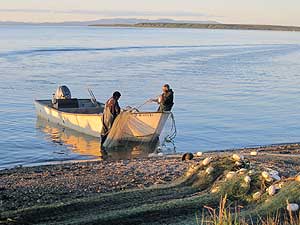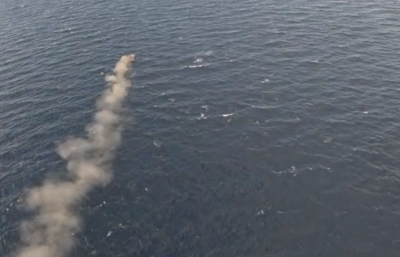Though autumn marks the end of the fishing seasons for herring, salmon, halibut and blackcod, there’s much afoot with changes in fisheries management when the Alaska Board of Fisheries ramps up for meetings beginning in October and running through March of 2023.
In the lives of Alaska’s proactive commercial fishermen, it’s either fishing season or meeting season.
For starters, the Board of Fisheries meets jointly with the North Pacific Fishery Management Council on Oct. 13. The agenda for the Joint Protocol Committee calls for a half day of discussions about small boat access in the state and federal Pacific cod fisheries, then reports and a rebuilding plan for beleaguered crab stocks in the Bering Sea. The meeting is open to public testimony, but the deadline for written testimony has been set for Oct. 5.
Board of Fisheries action resumes Oct. 27 and continues with meetings that stretch through March 13, as the fish panel reviews 169 proposals that could spell regulation changes in commercial fisheries across major seafood production areas in the state.
The board will begin Oct. 27 with proposals for cod at Chignik, the Bering Sea-Aleutian Islands (BSAI) and Alaska Peninsula. Beginning on Nov. 29 the board will delve into proposals pertaining to Bristol Bay salmon.
Alaska’s far west salmon topics, including the collapse of runs in the Yukon and Kuskokwim Rivers, will be the focus of the meetings running from Jan. 14 through Jan. 18. Salmon and other finfish will again dominate discussions at the meetings scheduled for Feb. 20 through Feb. 25.
The meetings beginning March 10 through March 13 will consist of supplemental finfish discussions, wrapping up the meeting season until the board takes up fisheries issues in other areas of the state sometime in autumn 2023.
Many of the proposals in this cycle emanate from the internal branches of the Alaska Department of Fish and Game with the intent of making the regulatory language consistent with practices in the field. Other proposals strive to correct those practices, when language falls subject to interpretation with other user groups or with enforcement officers.
Proposal 76, proposed by longtime fisherman Seth Kantner, pertains to commercial gill net operation in the Kotzebue area and calls for redefinition of “attendance” to anchored salmon nets.
For years, local fishermen set and anchored their nets perpendicular to the shoreline for chum salmon, then returned to their camps and focused on other chores while the nets continued fishing offshore. When fishing was slow, they might be away from the net for hours at a time.
This past season, however, an enforcement officer’s interpretation of the current language constituted violations and subsequent fines for leaving the nets unattended during operation.
Kantner has been fishing Kotzebue Sound for 47 years, and the regulation had never come into question. He crafted his proposal with the help of the enforcement officer and others “…who are all in agreement that a small change would help clarify and improve this situation and bring regulations in alignment with actual practices here.”
In Bristol Bay, the board and the industry will visit 15 proposals focused on salmon net specifications and vessel operations. Some of these proposals call for extending the distance that set gill netters can operate their nets offshore in reaction to changing shoreline conditions, thus restoring their access to fish at historical levels.
Other proposals have been borne of technological changes in the fishery, mainly the introduction of shallow-draft jet boats, which have spawned increasing conflicts between drift nets and nets that are anchored and fastened to shore.
The upcoming meeting cycle Nov. 29 through Dec. 3 will feature proposals attempting to establish new rules about the length of the tow ropes that run between drift vessels and their nets. Though the proposals address safety concerns involved with up to 1,000 feet of tow rope trailing between the vessel and the net, another argument is that the long tow ropes allow vessels to remain tied to the net in deeper water while the net fishes with its leadline mired in the mud, making it essentially a set net.
“This gear style lends itself to fishing with a grounded net,” say Tim Gervais, the author of Proposal 38, which calls for a 25-fathom limit on towlines. “I don't feel that this style of fishing is in the intent of drift gillnet operation.”
Other Bristol Bay finfish proposals (42-through 47) will revisit the practice of “permit stacking,” which allows two limited entry permit holders on the same boat and allows for fishing a single net of up to 200 fathoms. A boat with a single permit can legally operate 150 fathoms in a single net.
Some of those proposals have been predicated by changes in ex-vessel prices through the years. One argument holds that during the era of sub 50-cent-per-pound offers from processors, the economics of doubling up on boats reduced the overhead costs racked up between two skippers on two boats. In the years since, ex-vessel prices have increased, and those in favor of repealing the 200-fathom limit assert that the stacked-permit boats create an unfair advantage in intercepting fish bound for vessels fishing the shorter nets.
Arguments from the opposing side contend that the longer nets allow for a more efficient harvest and maximize utilization of the resource. The 150-fathom versus 200-fathom drift gill net proposals have become a recurring controversy in each board cycle since its inception in 2010.
Other proposals attempt to rectify rightful access to fisheries resources among user groups. Proposal 80, submitted by John Lamont, calls for clarification in the legal uses of chinook salmon harvested on the middle Yukon River. Lamont’s proposal notes that fishermen in the lower Yukon, Area Y-1, have seen closures to their fishery under the assumption it operates as a cash-generating fishery, while federal laws provide for the harvest of fish upriver under “subsistence” and “customary trade” guidelines.
The river has been divided into six fishing districts. Lamont, who fishes in Y-1, argues that language defining subsistence harvests and allowing for customary trade upriver in areas 4, 5 and 6 has essentially allowed fish in those areas to be sold for cash, causing economic inequities among rural villages.
For a complete rundown of the 169 proposals, dates and times of the meetings, deadlines for written comments, changes in agendas or meeting venues, visit this link provided by the Alaska Board of Fisheries.
The book of proposals (online) can be found here.







